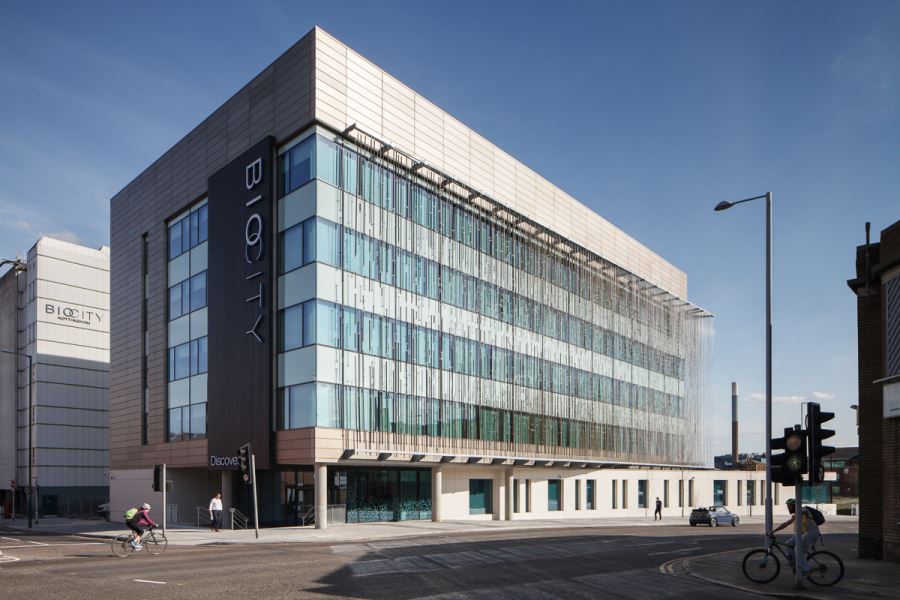Nottingham was the capital of lace for over 100 years and this heritage still runs through the streets, with the much-loved Lace Market still retaining its name and charm. Lace is still celebrated in Nottingham, with recent events being curated by Nottingham City Museums and Galleries to remind us of the city’s rich heritage, whilst looking forward to its use as a contemporary inspiration locally and across the globe.
The Lace Unravelled Symposium was a two-day event which reflected on lace as a product, the industry it created and how it is being referenced today to inspire new work. The symposium brought together lace industry experts, curators, artists and academics from the UK, France and as far as Australia. Attendees took part in talks, tours, panel discussions and an overwhelming amount of sharing of knowledge and passion.
Visit Nottinghamshire was invited to attend to see what the symposium was all about, so I jumped at the opportunity to attend on the Friday at one of my favourite attractions, Newstead Abbey, once home to Lord Byron. As I arrived to meet everyone chatting over coffee, I could quite imagine him enjoying such an event.
The day began with a keynote from local Nottingham artist Wolfgang Buttress. Best known for his staggering Hive, created initially for the UK Pavilion at the 2015 Milan Expo and now at home in Kew Gardens. Wolfgang took us through the journey of the Hive from inception to production. The theme of the expo was feeding the planet, and with honey bees pollinating 30% of all the world’s food the link between the theme and the Hive is robust. Wolfgang created a piece which replicated his experience of bee hives, visually but also audibly. Visitors can even experience the vibrations of the Hive by placing a small wooden stick in their mouth and touching the structure with it, feeling the vibrations travel into their head.
In Nottingham, you can view another piece of Wolfgang’s work, Corona, on the front façade of the BioCity building. Wolfgang explained that lace was a key factor in the design, in fact the negative space that is found in lace, informed the shape of the extrusions on the building. The extrusions are connected to NASA satellites enabling it to reflect live activity from the surface of the sun.

We then heard from Sarah Taylor, Senior Research Fellow at Edinburgh Napier University and Sara Robertson, Smart Textiles Tutor on the MA Textiles at the Royal College at Art. They enlightened us about their collaboration to create lace which would emit light. The outcome is beautifully contemporary and was displayed as part of the recent Lace Unarchived at Bonington Gallery, Nottingham Trent University.
The day continued with Sylvie Marot, an independent fashion heritage curator from France highlighting the extensive and continued use of lace in haute couture. Followed by Cecilia Heffer, Senior Lecturer in Textiles at the University of Technology in Sydney. Cecilia shared her experience with producing her own version of lace in her art practice, and her experience of teaching her students about lace in a non-existent market in Australia.
Finally, we heard from Shane Waltener, one of the artists who has created new work at Newstead Abbey as part of Lace Unveiled which is on until Sunday 22 April 2018. Shane has created new work inside and outside of the house, he explains:
“I was interested in the views of the house as you approach it from the outside as well as those seen from inside of the gardens and grounds. Creating indoor and outdoor pieces I hoped would be a way of integrating both spaces and help visitors interpret what they see, what they experience, in a wider context and with a broader perspective.”
“The variable and ever-changing nature of an outdoor natural environment appeals to me greatly and what an artwork might do, and how it might be perceived in this context. While making the work indoors was a response to objects and what we know about them, making outdoor was a matter of engaging with time and place, and with the elements too.”
The contrast of the new works against the historic house reflects the old and new of lace, the then and now. Shane went on to explain how the house inspired these new works:
“At the time George Gordon Byron lived there, only five rooms were decorated and fit to live in according to his own specifications. Byron would’ve had to walk through semi-dilapidated interiors to get from one of these rooms to the other. This perfectly suited his romantic sense of aesthetics and penchant for follies, ruins, and architectural features alluding to the passing of things and time itself.”
“As a response to this, the installation Score for Newstead Abbey was created for a space that runs alongside the Monk’s Pond at the abbey. It is a liminal space between house and grounds, land and water and rows of yew trees. The stitched canopy above head offers visitors a space for contemplation and reflection, as romantic follies are designed to do and an opportunity to slow down and look up at the trees above and sky beyond.”
Lace is intertwined in the history of Nottingham, as is production and creation. This symposium brought together a wide variety of people who have an investment in the past and future of this. The exhibitions showcase this rich heritage whilst presenting new and exciting work that demonstrates our ability to create newness whilst being respectful of what has gone before.
Check out Lace Unveiled at Newstead Abbey until Sunday 22 April 2018
Part of The Grand Tour Season Three.
This blog was written by Genevieve Preece, Communications Executive at Marketing NG.
Related
Comments
Nobody has commented on this post yet, why not send us your thoughts and be the first?

 to add an item to your Itinerary basket.
to add an item to your Itinerary basket.










